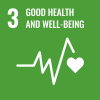Photo: IOM/Kaye Viray 2021
Tigray, 19 Oct 2021 - “I was in the middle of teaching my class when we heard gunshots and explosions. I had to calm myself down to make sure all my students were safe,” Shewit, a former teacher displaced by the conflict in Tigray, recalls. She is among nearly 2 million people internally displaced since the conflict broke out in November 2020.

Shewit, a former teacher displaced by the conflict in Ethiopia’s Tigray region. Photo: IOM/Kaye Viray 2021
A single mother to four children, “Teacher Shewit,” as the others in the displacement site call her, shares her struggles after fleeing her home.
“We walked for five days to reach Shire to seek safety. When we arrived, the host community was receptive and provided us with some injera (traditional flatbread), water, among other things. We, however, had to sleep under trees for the first few days as we had no shelter – I feared for our safety every time,” she says.
Since the conflict broke out, readily available public facilities like schools across the Tigray region have been forced to serve as emergency housing for internally displaced persons (IDPs) as they fled the conflict. Access to the region was limited at the height of the conflict and when it was eased, IOM’s Camp Coordination and Camp Management (CCCM) team began reaching out to the sites in mid-April to initiate critical site management activities.
IOM, alongside other partners, has provided Shewit and other families at the site with shelter, non-food items and other support crucial for their survival. Ironically, the former teacher is now temporarily living in a former school, together with her young children.
Despite the drastic changes to her family’s situation, she refuses to dwell on their hardships. “I am grateful for this shelter, for everything. Life has not been easy since we left, but I’ve learned not to take anything for granted,” Shewit says.
Shewit and a friend prepare lunch in her individual shelter in Shire, Tigray Region, Ethiopia. Photo: IOM/Kaye Viray 2021
As part of its CCCM activities, IOM is helping improve living conditions for IDPs, including through the installation of solar lights. Photo: IOM/Kaye Viray 2021
IOM’s Response
IOM’s CCCM programme serves displacement-affected communities in three main types of settings: IDP sites including collective centres, planned sites, and dispersed settlements; IDPs living in the community; and IDP returnees in their kebeles (district) of origin.

IOM is building emergency shelters in various IDP sites in northern Ethiopia. Photo: IOM/Kaye Viray 2021
By the end of July 2021, IOM CCCM was supporting 34 IDP sites in northern Ethiopia (two in Amhara and 32 in Tigray), reaching over 97,000 IDPs. The team is also working with municipal authorities to complete the preparation of a large relocation site in Mekelle city, named Sabacare 4, which can accommodate approximately 18,000 people. This can enable the clearing of some of the schools currently serving as IDP sites, to allow children to return to school.
When the conflict started in early November 2020, schools were already closed, and this facilitated the settlement of the IDPs. To improve the living conditions of and support relocation of the IDPs, site planning was undertaken to ensure continuity of classes when schools reopen and the IDPs have been evacuated.
“CCCM supports government Site Management focal points to improve living conditions for vulnerable people like Shewit, and provide access to services for affected populations through coordination and information management, site maintenance and improvements, community participation and capacity-building,” says Stiofainin Nic Íomhaird, CCCM Programme Manager.
“A well-coordinated and planned shelter response, particularly in situations of protracted displacement, is critical to help prevent displaced populations from seeking shelter in unacceptable conditions that further aggravate their vulnerabilities and protection risks.”
Since December 2020, IOM has been responding to the crisis in the region. Through its CCCM programme, it serves displacement-affected communities in IDP sites including collective centres, planned sites, and dispersed settlements; IDPs living in the community; and IDP returnees in their district of origin.
To help mitigate the spread of COVID-19 in displacement sites throughout country – which is particularly important in places where many people are living in proximity – IOM has led intensive risk communication campaigns together with health and water, sanitation and hygiene (WASH) counterparts, and community committees, alongside the wider community. Furthermore, IOM has been carrying out site improvements to enhance infection prevention and control (IPC). Crucially, IOM CCCM has also supported local authorities to develop woreda-level, or local level, site-specific COVID-19 preparedness, and response standard operating procedures (SOPs) in IDP sites.
Thanks to these efforts in displacement sites across Tigray region, families like Shewit’s no longer need to sleep exposed underneath trees. While they await a more sustainable solution to safely return home, they can rest more peacefully with four makeshift walls and a roof over their heads, at the very least.
IOM’s Camp Coordination and Camp Management Response in northern Ethiopia is funded by USAID Bureau of Humanitarian Assistance, UN CERF, European Civil Protection and Humanitarian Aid Operations and Ethiopia Humanitarian Fund.
Read the CCCM cluster appeal here.
This story is written by Kaye Viray, Media and Communications Officer for IOM Ethiopia.


